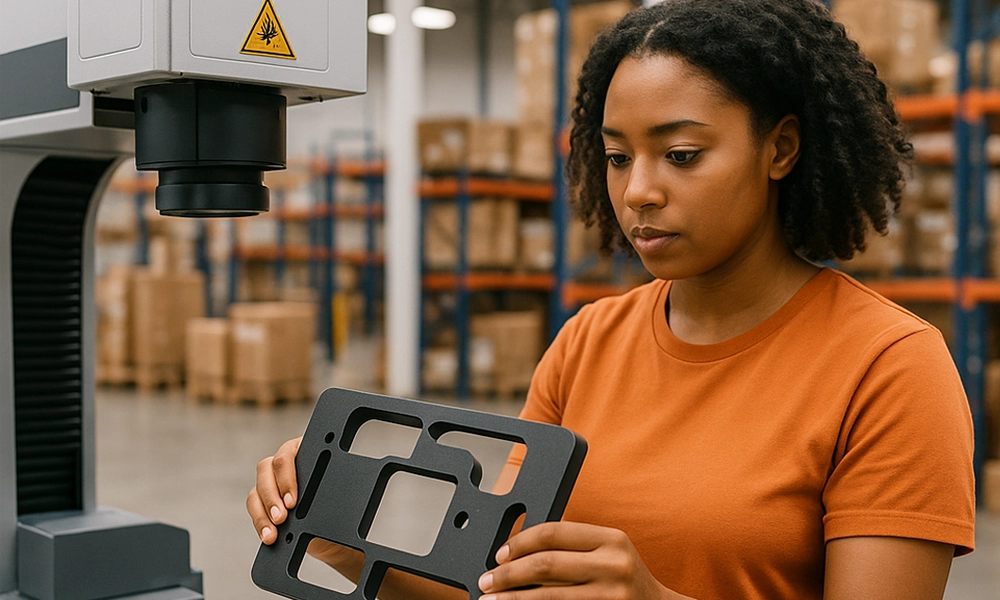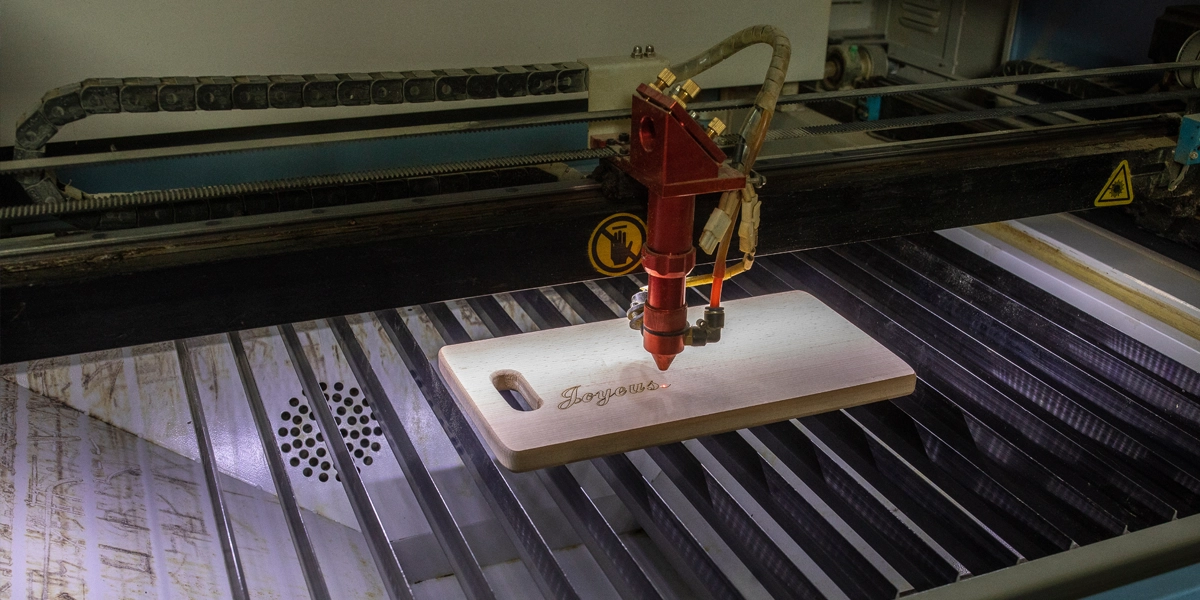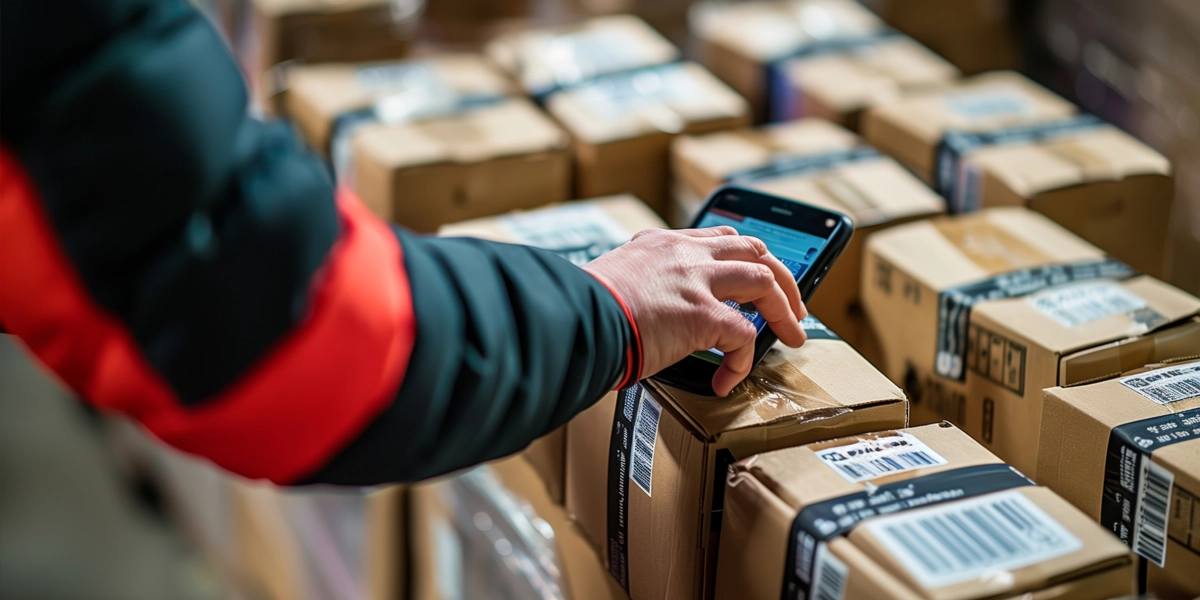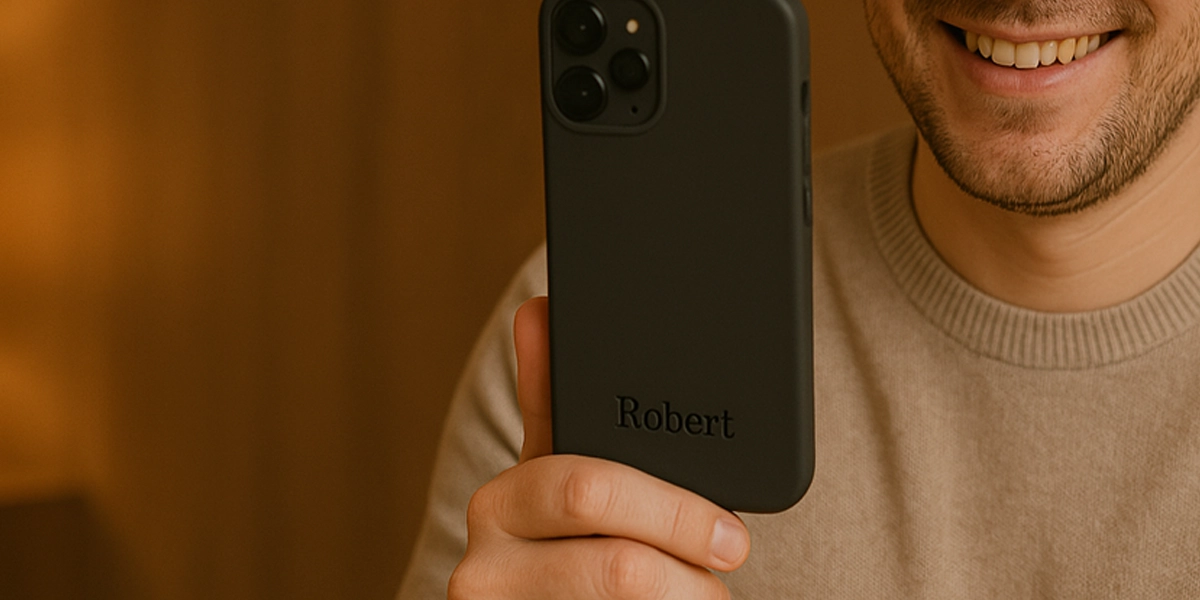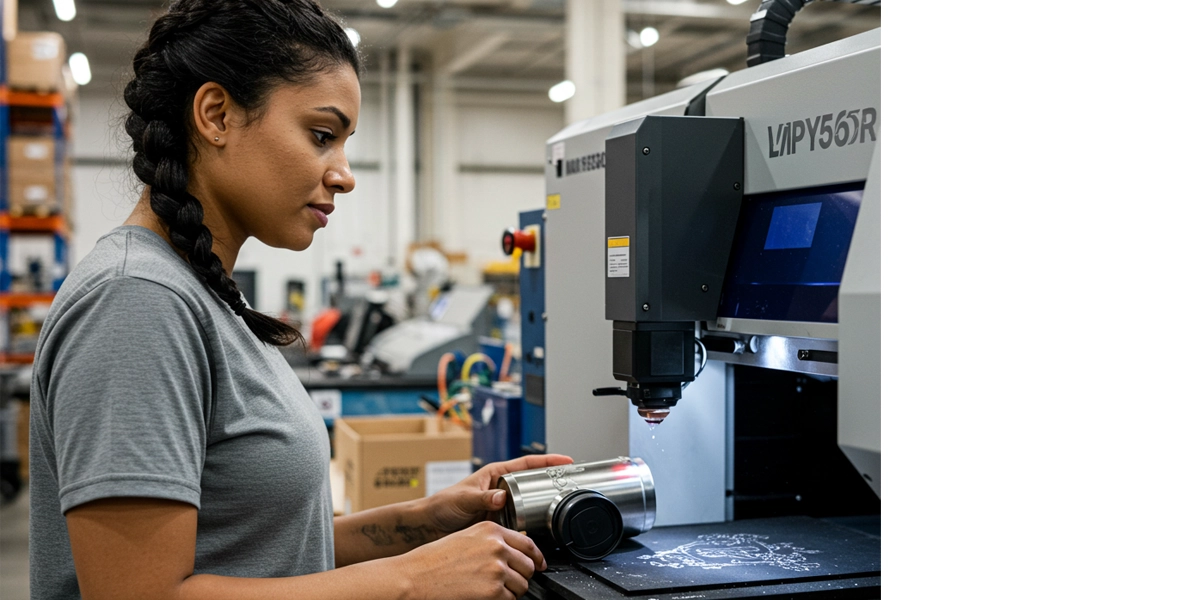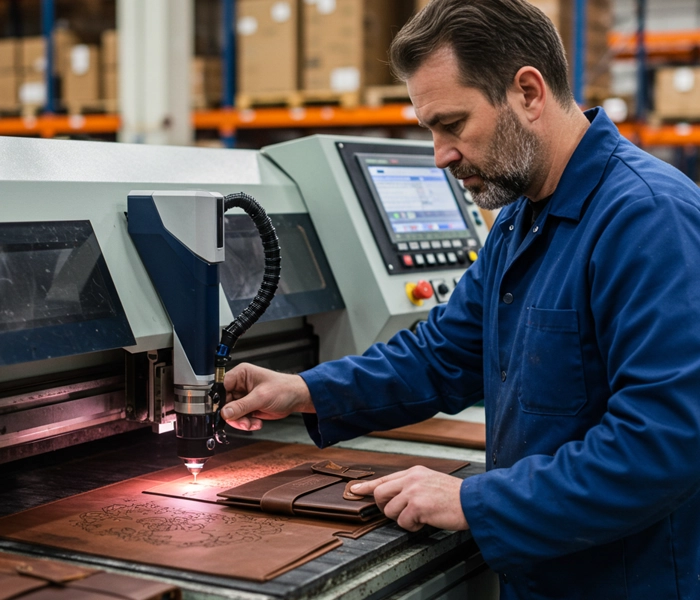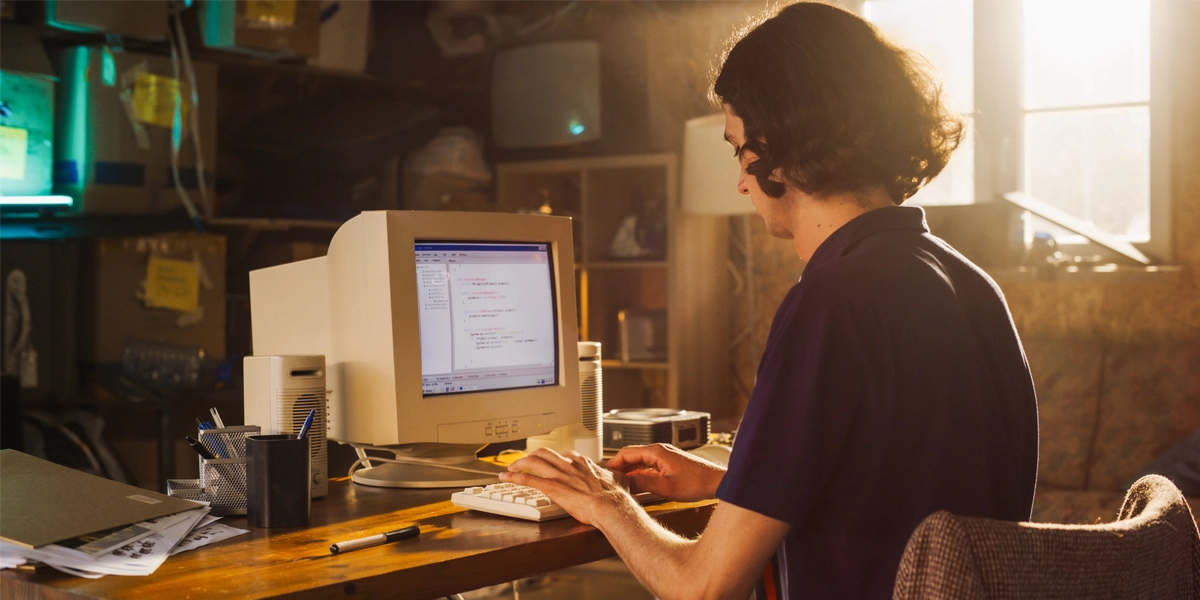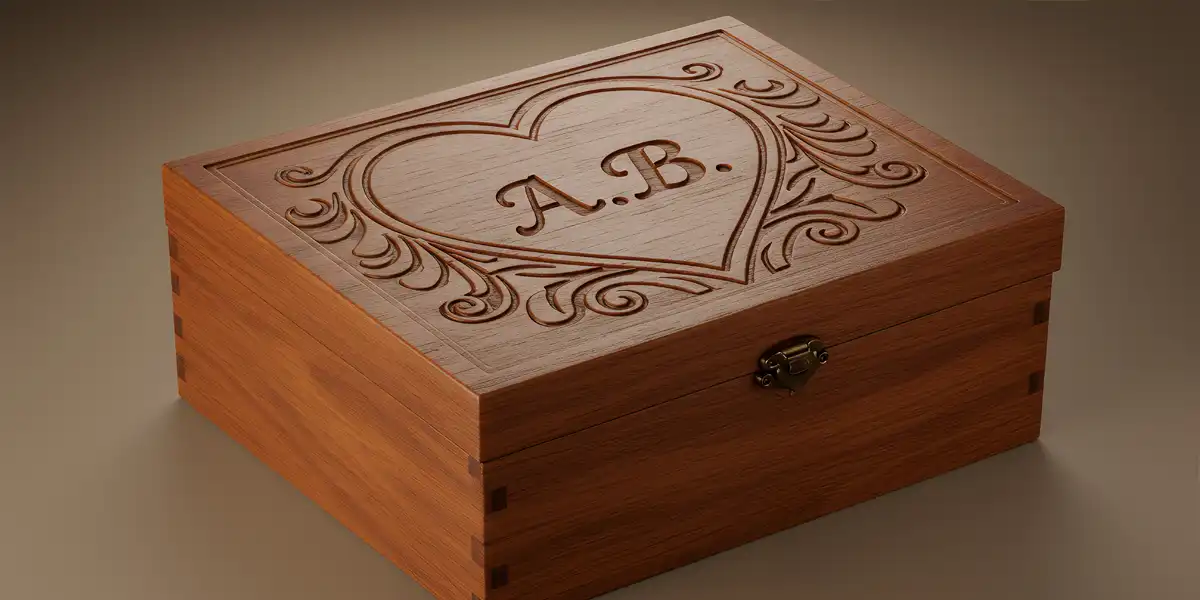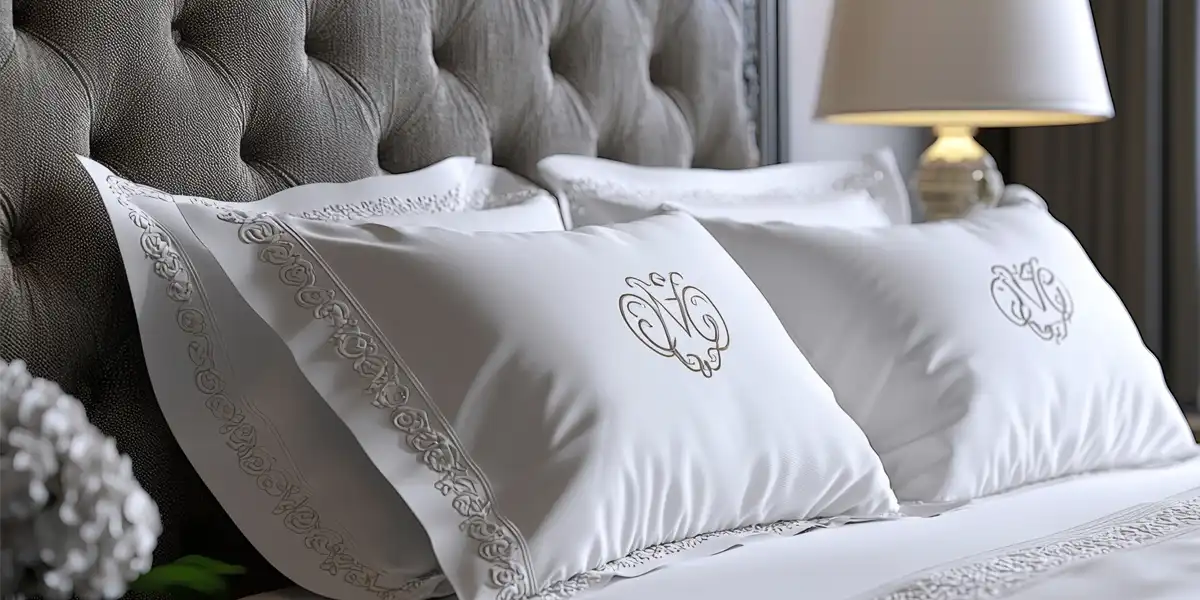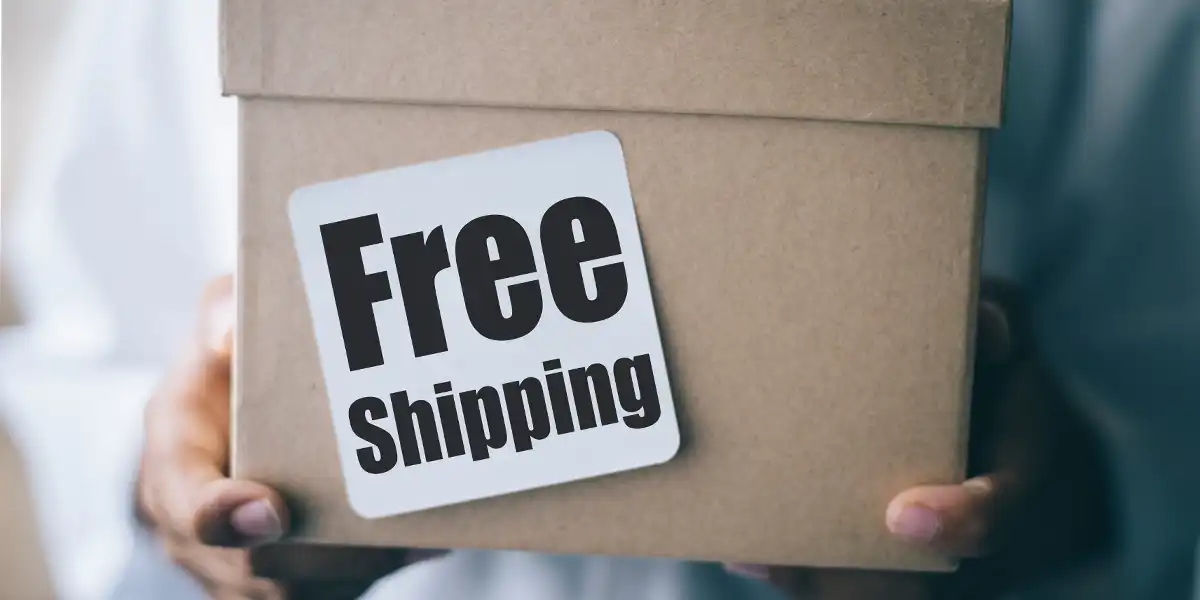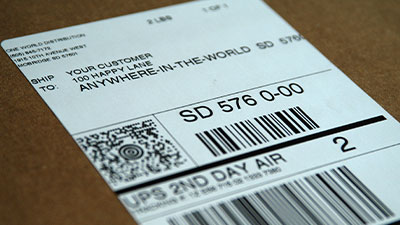In This Article:
Embroidery is an ancient craft that uses a needle, thread, or yarn to decorate fabric. It has been an important part of many cultures throughout history, serving both practical and ornamental purposes. From tapestries made in the Middle Ages to traditional clothing, embroidery has changed over time but is still in high demand.
Recently, embroidery has become increasingly popular for ecommerce businesses. People love personalized items like custom-embroidered clothes and accessories. Offering a way for shoppers to customize products with personalized embroidery is a huge opportunity for many businesses and an effective way to convert more visitors and increase cart values.
In this article, we will explore the fascinating world of embroidery:
- How embroidery works
- Different methods and techniques used
- Various industries where it is used
- Benefits of offering personalized embroidery
Understanding the Embroidery Process
Embroidery is a meticulous craft that involves several critical steps to transform a blank canvas into a unique masterpiece. Here’s an overview:
Step 1: Design Creation
The process begins with creating a design, which can be done manually or using specialized software. This stage allows for creativity and innovation, setting the foundation for the final product.
Step 2: Digitization
Once the design is finalized, it needs to be digitized. This step involves converting the design into a format that embroidery machines can read, ensuring precision and accuracy. Digitized designs are crucial for maintaining consistency across multiple pieces and also enable easier modifications and adjustments based on specific client needs.
Step 3: Fabric Selection
The choice of fabric plays a significant role in the outcome. Different fabrics interact uniquely with threads and stitches, impacting the overall appearance and quality of the embroidery.
Step 4: Hooping
The fabric is then securely placed in an embroidery hoop to keep it taut during stitching, preventing any distortions or puckering.
Step 5: Stitching
This involves the actual embroidery process where the machine follows the digitized design to stitch onto the fabric. Various types of stitches can be used to add texture and dimension.
Step 6: Finishing Touches
After stitching, any excess threads are trimmed, and the fabric is cleaned up to enhance its presentation.
Importance of Digitized Designs
Digitized designs are essential in modern embroidery as they ensure:
- Precision: Accurate replication of complex patterns.
- Efficiency: Faster production times without compromising on quality.
- Consistency: Uniformity across multiple items, which is particularly important for branding.
Using advanced software for digitizing designs also allows for flexibility in designing unique embroidered products. Our versatile P2C fulfillment plugin can be integrated with over 200 ecommerce shopping carts, marketplaces, and EDI/ERP systems.
While our WMS handles all channel integrations directly, the personalization plugin requires collaboration with our team of personalization and IT experts to ensure seamless data transfer and efficient operation. This way, brands can offer personalized embroidery without investing in machinery, design software, or technicians.
Types of Stitches
Different types of stitches create various effects in embroidery:
- Satin Stitch: Ideal for smooth surfaces and lettering, providing a glossy finish.
- Fill Stitch: Used for covering larger areas with solid color, adding density and texture.
- Running Stitch: Basic yet versatile, perfect for outlines and detailing.
- French Knots: Adds small raised dots, contributing to a tactile element.
Each stitch type serves unique applications, enhancing texture and visual interest. Understanding these nuances helps you appreciate the artistry and technical skill involved in each embroidered piece.
If you’re interested in taking your embroidery to the next level, you might want to explore product personalization options in ecommerce. This 2024 Personalization and Customization in Ecommerce Guide can help you discover the benefits of offering product personalization, customized product examples, and the best personalization software to use for your store. Additionally, if you want to offer engraving and embroidery for your products with custom greeting cards at checkout, consider exploring our Personalized-to-Consumer (P2C) fulfillment services.
Different Methods of Embroidery
Traditional Hand Embroidery Techniques
Hand embroidery is an age-old craft that relies on manual dexterity and skill. It involves using a needle and thread to create intricate designs on fabric. Techniques such as cross-stitch, satin stitch, and French knots are commonly used in hand embroidery. Each stitch type offers unique textures and dimensions, enabling artisans to craft one-of-a-kind pieces.
Key Features:
- Customization: Every piece is unique, reflecting the artisan’s skill and creativity.
- Texture: Hand stitches can vary in tension and style, creating rich textures.
- Time-Intensive: Crafting by hand requires significant time investment.
Modern Machine Embroidery Methods
Machine embroidery revolutionized the industry by automating the stitching process. Utilizing computerized embroidery machines, digitized designs are translated into precise stitch patterns. This method ensures uniformity and efficiency, making it ideal for mass production.
Key Features:
- Precision: Digitized designs ensure accurate replication of patterns.
- Speed: Machines can complete complex designs quickly.
- Consistency: Every embroidered piece maintains the same quality.
Pros and Cons of Hand vs. Machine Embroidery
Both hand and machine embroidery have their distinct advantages and limitations. Understanding these can help you choose the method best suited for your needs.
Hand Embroidery Pros:
- Customization
- Rich texture
- Unique artistry
Hand Embroidery Cons:
- Time-consuming
- Labor-intensive
- Limited scalability
Machine Embroidery Pros:
- High precision
- Fast production times
- Scalability for large orders
Machine Embroidery Cons:
- Less customization
- Initial investment in machinery
- Possible lack of texture depth
Direct Embroidery for Garments and Textiles
Direct embroidery involves stitching designs directly onto garments or textiles. This technique is popular for branding purposes, such as embroidering company logos on uniforms or promotional items.
Applications:
- Branding: Enhances corporate identity with embroidered logos on apparel.
- Personalization: Adds a personal touch to custom clothing or gifts.
In addition to these methods, it’s important to consider other aspects of offering customized embroidery designs for your ecommerce business. For instance, partnering with a reputable ecommerce fulfillment company with machines that can produce customized embroidery is ideal. Investing in these machines and finding specialized technicians on your own is not practical. A 3PL that can process, embroider, and ship out your products for you is the most affordable and smoothest process for both you and your shoppers.
Exploring Applications of Embroidery
Machine Embroidery: Patches and Appliques
Machine embroidery is essential for creating both decorative and functional patches and appliques. Patches can be used to decorate garments, accessories, or home decor items, while appliques add texture and depth to textile art. The precision of machine embroidery ensures that even the most intricate designs are executed perfectly, making it an excellent choice for detailed artwork.
Enhancing Branding with Embroidery
Embroidery significantly boosts the branding value of promotional items. Custom t-shirts, bags, and hats with embroidered logos or slogans create a polished and professional look. They serve as walking billboards for your brand, spreading awareness wherever they go. This can be particularly effective at events or trade shows, where your embroidered merchandise can catch the attention of potential customers and leave a lasting impression.
Specialized Forms of Embroidery
There are specialized forms of embroidery that highlight the luxurious possibilities of this craft:
- Goldwork Project: This technique uses metal threads to create intricate patterns that shimmer with elegance. Historically associated with royalty and religious garments, goldwork projects bring a touch of opulence to modern fashion.
- Wool Embroidery Project: Using wool threads, this method offers a rich texture and vibrant color range. Wool embroidery projects are often found in traditional folk art but have also made their way into contemporary design due to their unique aesthetic.
Versatility Across Industries
Embroidery’s versatility is evident across various industries:
- Fashion: High-end designers frequently use embroidery to add intricate details to garments. Whether it’s on evening gowns or casual wear, embroidered elements elevate the overall design.
- Home Decor: From linens to wall hangings, embroidery adds a personalized touch to interior spaces. Custom embroidered pieces can turn everyday items into statement decor.
- Automotive: Luxury car brands often incorporate embroidered logos on seats and accessories, enhancing the vehicle’s premium feel.
Offering Embroidery as a Customization Service in Your Ecommerce Business
Benefits of Offering Personalized Embroidery
Incorporating embroidery as a personalized fulfillment option for your ecommerce store offers significant advantages. Embroidery adds a tactile, high-quality finish to products, enhancing perceived value and brand prestige. Personalized embroidery can:
- Increase Customer Loyalty and Product Appeal: Personalized items, such as adding names, phrases, or initials, create a more memorable shopping experience and make standard products stand out. This unique touch can attract more customers and prompt positive shopping experiences.
- Enable Premium Pricing: The added craftsmanship allows you to price products higher than their non-embroidered counterparts.
- Free Publicity: Shoppers are much more inclined to share and show off their embroidered products to their friends or on their social media pages. Increase positive reviews and word-of-mouth marketing by offering personalized embroidered designs.
Key Factors in Pricing Your Embroidery Products
Pricing custom-embroidered products requires careful consideration of several factors to ensure profitability while maintaining competitive rates.
Stitch Count
The stitch count directly impacts production time and costs. Higher stitch counts often lead to more intricate and time-consuming designs. To calculate accurate pricing:
- Estimate Stitch Density: Different fabrics require different densities.
- Calculate Time Per Stitch: Understand how long each type of stitch takes on average.
Complexity of Design
Complex designs may involve multiple thread colors and intricate patterns, increasing production complexity and time. Design complexity factors include:
- Number of Color Changes: More thread colors mean more machine stops and starts.
- Detail Level: Fine details require slower stitching speeds for precision.
If your customers may have questions about embroidery options, partnering with a 3PL that provides customer support with call center services can significantly improve customer satisfaction and make your job much easier. Professionals can handle your calls, chats, and emails on your behalf, so customers can get fast, clear answers to their queries. Specifically, having a dedicated team to answer questions about customized embroidery products ensures that your customers receive expert advice and support so they can have a stellar online shopping experience.
Choice of Thread Colors
Thread costs vary based on quality and color. Specialty threads like metallics or glow-in-the-dark options can be more expensive but offer unique aesthetics that justify higher prices.
Practical Tips for Ensuring Quality Control
Follow these practical tips to ensure consistent quality for your embroidered products:
- Pre-Test Designs: Always pre-test new designs on fabric swatches similar to what you’ll use for final products. This helps identify potential issues before full production.
- Regular Machine Maintenance: Ensure your embroidery machines are regularly serviced to avoid downtime and maintain stitching precision.
- Use High-Quality Materials: Invest in high-quality threads and backing materials to enhance the durability and appearance of your embroidered products.
Embroidery offers a unique opportunity to add value and personalization to your ecommerce offerings. By understanding the factors influencing pricing and implementing robust quality control measures, you can begin providing custom embroidery for your products that delight customers and drive business growth.
However, the easiest and most profitable way to start offering personalized embroidery is by using our P2C fulfillment services. We have the machinery, infrastructure, and technicians ready to transform your product line with personalized engravings, embroidery, or print-on-demand imagery. Avoid the hefty investment of buying these machines on your own and use our simple P2C plugin so your shoppers can personalize your products with custom embroidery without the headaches.
Learn more about the benefits of ecommerce personalization and how we can reduce logistics costs for your business.
The Future of Embroidery in the Digital Age
Advancements in technology, particularly computerized embroidery machines, are revolutionizing the embroidery industry. These state-of-the-art machines offer unparalleled precision and efficiency, making it possible to reproduce intricate designs with extraordinary accuracy. This technological leap is not only transforming the way embroidery is done but also opening up a plethora of possibilities for design innovation.
Key Innovations in Computerized Embroidery:
- Digitized Designs: With the help of specialized software, designs can be digitized and then fed into embroidery machines. This ensures that every stitch is placed accurately, resulting in high-quality finishes.
- Speed and Efficiency: Modern machines can handle complex designs much faster than traditional methods. This allows for bulk production without compromising on quality.
- Customization Capabilities: Personalized-to-consumer fulfillment services have become more accessible, allowing businesses to offer custom embroidered products tailored specifically to individual customer preferences.
Schedule a Complimentary Logistics Consultation and Start Offering Personalized Embroidery
Personalized-to-consumer fulfillment is the ideal way to start offering embroidery for your products. We can handle the entire fulfillment process from storing, processing, embroidering, and shipping your products. We also offer the technology to allow shoppers to design their items online without investing in any new platforms or software on your end.
Schedule a complimentary logistics consultation with our team. During the call, we’ll review your current fulfillment approach and discuss how we can lower expenses while improving your entire logistics process. Start offering more sustainable fulfillment, and we’ll help you reduce picking and packing errors, improve order-picking accuracy, and overcome challenges in inventory management.
We are the most capable alternative to Amazon FBA and can provide comparable fulfillment services to match big retailers, such as overnight shipping. Book a call with our team and start offering seamless product customization for your product line, lower fulfillment expenses, and improve shipping times with OWD.
In This Article:
Subscribe to our Newsletter
Tincidunt urna mauris eu quam vulputate lobortis sit. Purus feugiat arcu nunc quisque massa ut.






